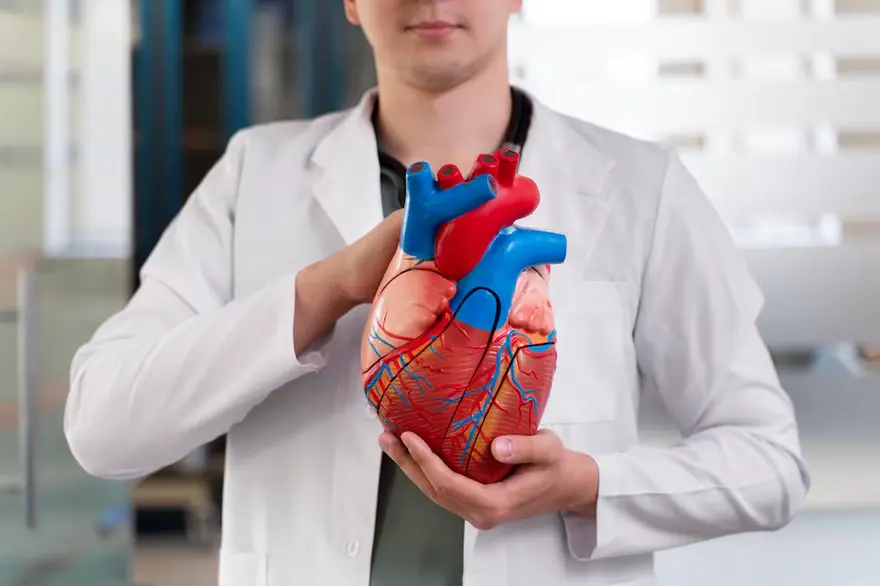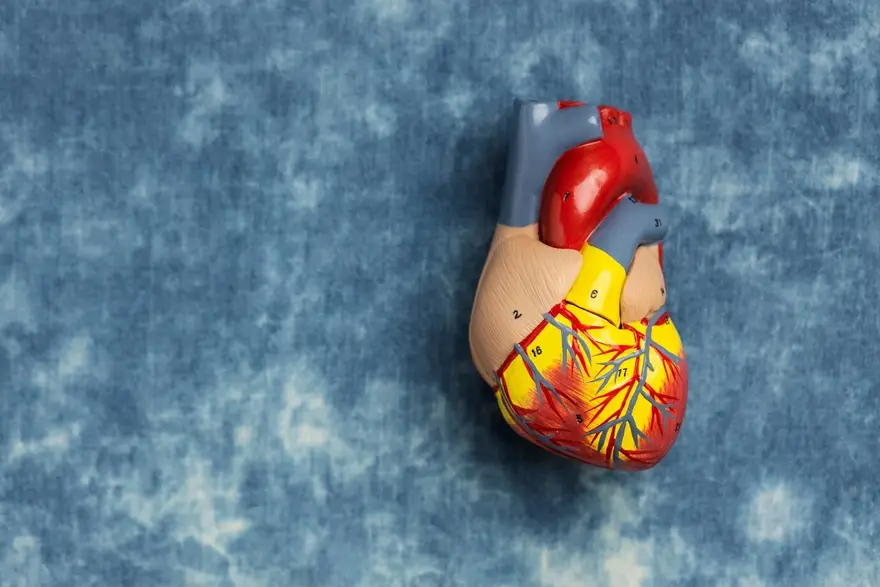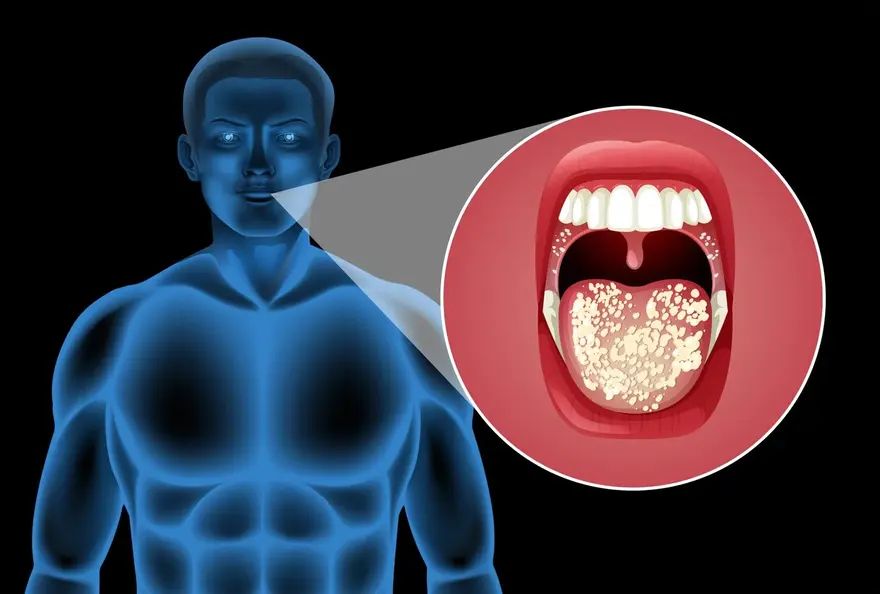Preventive Healthcare
Ventricular Septal Defect: Causes, Symptoms, and Treatment of Heart Defects
454 Views
0

What is a ventricular septal defect?
A ventricular septal defect (VSD) is a hole in the wall (septum) that divides the heart's two lower chambers, called the ventricles. VSD allows oxygen-rich blood from the left ventricle to mix with oxygen-poor blood in the right ventricle. The mixing of blood can lead to various health issues, depending on the size and location of the defect.
As one of the most common congenital heart defects, VSD affects nearly half of all children born with heart anomalies. While small VSDs may not cause significant issues, larger VSDs can lead to serious health problems if left untreated.
What happens inside my heart if we have a ventricular septal defect?
In a normal heart, the septum acts as a wall separating the left and right ventricles, ensuring that oxygen-rich blood from the left side and oxygen-poor blood from the right side do not mix. However, in a heart with a ventricular septal defect (VSD), there is an abnormal hole in the septum. This allows oxygen-rich blood from the left ventricle to flow into the right ventricle, where it mixes with oxygen-poor blood. As a result, the mixed blood is pumped back to the lungs instead of the body, leading to increased blood flow to the lungs. This extra workload strains the heart and lungs, potentially causing VSD symptoms like fatigue, rapid breathing, or delayed growth in severe cases.
The extent of these effects depends on the size and location of the VSD. Smaller VSDs may cause minimal ventricular septal defect symptoms, while larger ones may require medical intervention to prevent complications such as heart failure or lung damage.
Who does it affect?
Ventricular septal defects (VSD) are most commonly diagnosed in infants and children, as they rank among the most prevalent congenital heart defects. Ventricular septal defect causes appear when the septum between the ventricles fails to form properly during foetal development. However, VSDs can also develop in adults, typically as a rare but severe complication of a heart attack. Unlike congenital VSDs, these are acquired defects caused by the rupture of the septal tissue due to damage from a heart attack. Adult-onset VSDs often require urgent medical attention and intervention.
How common is this condition?
VSD is one of the most common congenital heart defects. According to the Centers for Disease Control and Prevention (CDC), about 1 in every 500 babies is born with a VSD each year in the United States. This means that nearly 40,000 infants are affected by VSDs annually in the US alone.
What are the different types of VSD?
Ventricular septal defects (VSDs) are classified into different types based on their location within the heart, with each ventricular septal defect type having distinct characteristics:
- Conoventricular VSD: This type occurs where parts of the ventricular septum converge, positioned just below the pulmonary and aortic valves.
- Perimembranous VSD: Found in the upper part of the ventricular septum, this is one of the more frequently identified ventricular septal defect types.
- Inlet VSD: Located near the entry point of blood into the ventricles, close to the tricuspid and mitral valves, this type is often associated with atrioventricular septal defects (AVSD).
- Muscular VSD: The most common type of VSD, this occurs in the lower, muscular portion of the ventricular septum.
Each ventricular septal defect type can influence how blood flows through the heart and the severity of symptoms. Understanding the specific VSD type helps guide diagnosis, monitoring, and treatment to manage the condition effectively.
How does this condition affect our body?
The impact of a ventricular septal defect on the body largely depends on the size of the opening. Here's how different sizes of VSDs can affect your child's health:
VSD size and effects
Small VSDs:
- Often do not cause significant symptoms
- May only be detected by a heart murmur during a routine checkup
- Can close on their own as the heart grows
- Usually require regular monitoring but may not need immediate treatment
Medium to Large VSDs:
- Can lead to increased blood flow to the lungs, resulting in higher pressure in the pulmonary blood vessels
- The increased workload on the heart and lungs can cause symptoms like fast or heavy breathing, shortness of breath, sweating, tiredness while feeding, and poor weight gain
- If left untreated, medium to large VSDs can lead to complications such as heart failure, lung problems, irregular heart rhythms (arrhythmias), heart valve issues, and delayed growth and development.
The presence of a VSD can have several effects on your child's overall health and development:
- Increased heart workload: The heart has to work harder to compensate for the abnormal blood flow, which can lead to heart failure if a VSD is large and untreated.
- Lung problems: Increased blood flow to the lungs can cause lung congestion and eventually lead to pulmonary hypertension.
- Growth and development issues: Children with large VSDs may experience poor weight gain and delayed growth due to increased energy expenditure by the heart and lungs.
- Respiratory issues: Babies with large VSDs often have trouble breathing, exhibit rapid breathing, and may have frequent respiratory infections.
- General health concerns: Untreated large VSDs can lead to complications such as irregular heart rhythms, heart valve problems, and overall poor health due to the strain on the cardiovascular system.
What are the symptoms of VSD?
Ventricular septal defect symptoms vary based on the size of the opening. Some common VSD signs and symptoms include:
- Heart murmur (often the only sign of a small VSD)
- Fast or heavy breathing
- Shortness of breath
- Sweating
- Tiredness while feeding
- Poor weight gain
- Pale skin
- Rapid heart rate
- Enlarged liver
- Poor feeding
If you notice any of such ventricular septal defect symptoms in your child, it's essential to consult a pediatric cardiologist for an accurate diagnosis and appropriate ventricular septal defect treatment plan.
What causes the condition?
The exact ventricular septal defect causes are not always known, but several factors may contribute to the development of this congenital heart defect:
- Genetic factors: Some genetic conditions, such as Down syndrome, can increase the risk of VSD.
- Family history: Having a family member with a congenital heart defect may increase the likelihood of a child being born with VSD.
- Environmental factors: Exposure to certain medications, chemicals, or infections during pregnancy may increase the risk of congenital heart defects, including VSD.
- Maternal health: Certain maternal health conditions, such as diabetes or rubella infection during pregnancy, can increase the risk of VSD in the developing foetus.
It's important to note that in many cases, the ventricular septal defect causes may remain unknown, and it is not always possible to prevent the condition from occurring.
How is it diagnosed?
Diagnosing a ventricular septal defect (VSD) involves several steps.
- A paediatric cardiologist may detect a heart murmur during a physical exam, which can suggest a VSD.
- An echocardiogram, a non-invasive ultrasound, provides detailed images of the heart to confirm VSD.
- An electrocardiogram (ECG) records the heart's electrical activity, identifying rhythm or structural issues.
- A chest X-ray may reveal heart enlargement or increased lung blood flow linked to a significant VSD.
- In some cases, cardiac catheterization measures heart pressure and oxygen levels to assess the VSD's severity.
What tests will be done to diagnose this condition?
Diagnosing a ventricular septal defect involves a combination of clinical examination and various tests. Here's what you can expect:
- Physical Examination: Your doctor will listen to your child's heart with a stethoscope to detect any abnormal sounds, such as a heart murmur. In VSD, the murmur is typically loud and harsh, heard best at the lower left side of the breastbone.
- Echocardiography: An echocardiogram, particularly a colour Doppler transthoracic echocardiography (TTE), is the most valuable tool for diagnosing VSD. It uses sound waves to create detailed images of the heart, allowing the doctor to see the hole's size, location, and impact on blood flow. TTE can detect up to 95% of ventricular septal defect cases.
- Chest X-ray: A chest X-ray may be done to check for signs of an enlarged heart or increased blood flow to the lungs, which can occur with larger VSDs. However, a normal chest X-ray doesn't rule out a small VSD.
- Electrocardiogram (ECG): An ECG records the heart's electrical activity. It can show signs of an enlarged left ventricle due to the extra blood flow from the left to right side of the heart in VSD. In more severe cases, the ECG may reveal strain on the right side of the heart.
- Cardiac Catheterization: In some cases, especially before surgical repair, cardiac catheterization may be performed. A thin, flexible tube is inserted into a blood vessel and guided to the heart. This allows the doctor to directly measure pressures within the heart chambers and assess the degree of blood flow through the VSD.
These tests help your doctor determine the VSD type, size, location, and severity, guiding ventricular septal defect treatment decisions. Early diagnosis is crucial to prevent complications and ensure the best outcomes for your child's heart health.
How is it treated, and is there a cure?
Ventricular septal defect treatment depends on the size of the hole and the presence of symptoms. Here's what you need to know:
- Monitoring Small VSDs: Small VSDs often close on their own within the first few years of life. If your child has a small defect without any symptoms, the doctor may recommend regular check-ups to monitor their condition. No active VSD treatment may be necessary.
- Medications for Symptoms: If your child has a moderate to large VSD causing symptoms like poor feeding, fast breathing, or failure to thrive, medications may be prescribed to manage these symptoms until the VSD can be repaired surgically.
- Surgical Repair: Surgery is the definitive treatment for medium to large VSDs that are causing significant symptoms or not closing spontaneously. The goal is to patch the hole and restore normal blood flow. Surgery is typically recommended within the first year of life.
- Catheter-Based Procedures: In some cases, especially for certain ventricular septal defect types, a less invasive catheter-based procedure may be an option. A small device is guided through a blood vessel to the heart and used to close the hole.
With timely intervention and appropriate care, most children with ventricular septal defects can lead healthy, active lives.
What medications/treatments are used?
Several medications may be used to manage VSD symptoms and support heart function in children with ventricular septal defect before surgery:
- Diuretics: These medications help the body eliminate excess fluid, reducing the workload on the heart and improving breathing.
- ACE Inhibitors: These drugs relax blood vessels and lower blood pressure, easing the heart's burden and improving blood flow.
- Inotropic Medications: These medications strengthen heart muscle contractions, improving pumping efficiency and enhancing overall cardiac function.
In addition to medications, ensuring optimal nutrition is crucial for infants with VSD who may struggle with feeding and growth. High-calorie formulas or supplemental tube feedings may be recommended.
Ultimately, the definitive ventricular septal defect treatment for most cases is surgical repair. The hole is closed with stitches or a patch, allowing blood to flow normally through the heart.
What are the possible complications or side effects of the treatments?
While treatments for VSD are generally safe and effective, there are potential risks and side effects to be aware of:
Surgery Risks:
- Bleeding
- Infection
- Abnormal heart rhythms
- Residual holes
Catheter Procedure Risks:
- Device dislocation
- Incomplete closure
- Damage to heart valves
Medication Side Effects:
- Low blood pressure (ACE inhibitors)
- Electrolyte imbalances (diuretics)
- Slow heart rate (digoxin)
Your child's healthcare team will closely monitor them for any VSD complications and adjust treatments as needed. Following post-operative care instructions and attending regular follow-up appointments are essential for a smooth VSD recovery and optimal heart health.
How soon after treatment will I feel better, and how long does it take to recover from this treatment?
After surgical or transcatheter repair, VSD patients typically spend a few days in the hospital for monitoring. Full VSD recovery usually takes several weeks, during which time strenuous activities should be avoided. Regular follow-up with a cardiologist is crucial to monitor for any residual defects or new issues.
How can I prevent this condition or reduce my risk?
While ventricular septal defect (VSD) is congenital, you can reduce risks with prenatal care, folic acid, avoiding harmful substances, managing chronic conditions, safe medications, and infection prevention during pregnancy.
What can I expect if I have this condition?
If your child is diagnosed with a ventricular septal defect, the outlook depends on the size and location of the hole, or presence of any VSD symptoms or any complications. Small VSDs usually cause no symptoms or long-term issues, while medium to large VSDs usually require surgical repair within the first year of life.
How long does a VSD last?
Small VSDs may close spontaneously within the first year of life. For larger defects that require treatment, the hole is permanently closed with surgery or a septal occluder device. However, regular monitoring is necessary to ensure the heart continues to function properly.
What's the outlook for this condition?
The outlook for children with ventricular septal defect is generally excellent, especially with early diagnosis and appropriate treatment. Here's what you can expect:
Small VSDs:
- Rarely cause any long-term issues
- Children can lead normal, active lives without restrictions
Medium to Large VSDs:
- After successful surgical repair, most children have normal heart function
- Regular follow-up care is essential to monitor for any complications
- With proper treatment and monitoring, children can enjoy a high quality of life.
As your child grows, they may have some activity restrictions, especially in competitive sports. Your paediatric cardiologist will guide you on safe activity levels based on your child's specific condition.
How Can I Take Care of Myself and Manage My Symptoms?
If you or your child has a ventricular septal defect, it's essential to:
- Attend regular check-ups with a cardiologist
- Take medications as prescribed
- Follow a healthy lifestyle with a balanced diet and regular exercise
- Avoid smoking and excessive alcohol consumption
- Stay up-to-date with vaccinations, especially against influenza and pneumococcal disease
- Promptly treat any respiratory infections
When to See a Doctor
Consult a healthcare provider if you notice any of the following symptoms in yourself or your child:
- Rapid breathing or shortness of breath
- Poor feeding and slow weight gain in infants
- Frequent respiratory infections
- Fatigue and sweating
- Bluish discolouration of the skin (cyanosis)
Conclusion
A ventricular septal defect is a common congenital heart condition that can be effectively managed with timely diagnosis and appropriate treatment. Understanding the ventricular septal defect types, causes, symptoms, and available treatment options is crucial for individuals and families affected by this condition.
At Metropolis Healthcare, we understand the importance of accurate diagnosis in managing VSDs. Our state-of-the-art diagnostic laboratories across India offer comprehensive pathology testing services, including blood tests that can help monitor your heart health. By staying informed and proactive about your health, you can successfully navigate this journey and maintain optimal well-being.








1744026029.webp)














 WhatsApp
WhatsApp